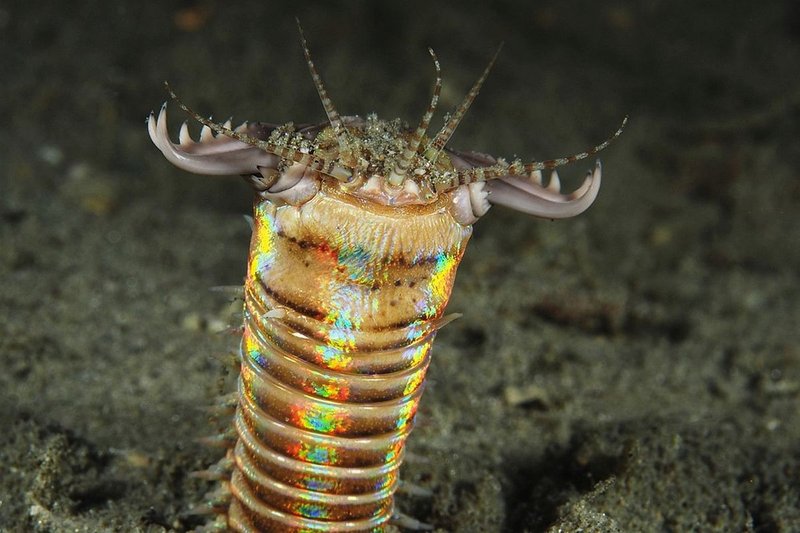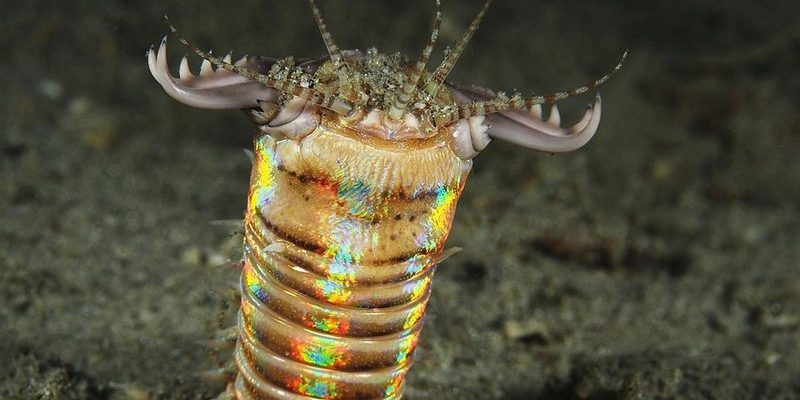
You might picture live rock as a vibrant, bustling city under the sea, filled with fascinating marine life. However, among the beautiful corals and colorful fish, there can be some not-so-friendly inhabitants, like the Bobbit worm. It’s a bit like inviting a raccoon to your picnic; it’s cute until it starts rifling through your bag! So, how can you keep your aquarium free from these hidden pests? Let’s break down some practical steps to ensure your setup remains a peaceful haven for your aquatic friends.
What is a Bobbit Worm?
A Bobbit worm is a marine predator that can grow up to ten feet long and lives buried in the sand or rock. They have a striking appearance, usually with bright colors like green or brown, which can make them quite attractive—until you realize they can be very dangerous for your fish. They’re known for their quick strikes, catching prey with their sharp jaws, making them a significant threat in a home aquarium.
The worm often goes unnoticed at first. It hides in crevices and may only reveal itself when it’s hungry. This behavior can lead to distress for your fish, as they may become targets. Honestly, if you’re thinking about setting up a reef tank, steering clear of Bobbit worms is crucial. You don’t want your fish to become a buffet for these stealthy hunters.
Why Live Rock Can Carry Bobbit Worms
When you purchase live rock, you’re often getting a piece of an ecosystem. This rock comes with established bacteria, algae, and other organisms that benefit your aquarium. However, it can also harbor unwanted critters, like Bobbit worms. These worms can attach themselves to the rock or even hide within it, making them extraordinarily difficult to spot.
Here’s the thing: not all suppliers guarantee that their live rock is free from pests. This is why it’s essential to do your homework and choose reputable suppliers. If you’re not careful, you might bring home a lovely piece of live rock, only to find out later that it was the gateway for an unwelcome guest that disrupts the balance of your tank.
How to Inspect Live Rock Before Purchase
Before you bring any live rock home, it’s vital to inspect it thoroughly.
- Visual Inspection: Check the rock for any visible signs of Bobbit worms. Look for holes or bumpy sections that might indicate a creature hiding inside.
- Shake Test: Gently shake the rock while it’s underwater. If you see small creatures swimming away, it’s a sign that the rock might harbor unwanted pests.
- Supplier Questions: Don’t hesitate to ask the seller about their sourcing process. Reputable suppliers should be able to provide information about their live rock and any potential pests.
By taking these steps, you’ll reduce the chances of accidentally introducing a Bobbit worm to your tank.
Quarantining Live Rock
After you purchase your live rock, it’s a smart idea to quarantine it before adding it to your tank. Quarantining is like giving the new addition a “time-out” to ensure it doesn’t come with hidden issues.
Here’s how to do it:
1. **Set Up a Quarantine Tank:** Use a separate tank with saltwater that matches your main tank’s parameters. This tank doesn’t need to be elaborate; just get the essentials right.
2. **Monitor for Pests:** Keep an eye on the rock for about 4-6 weeks. During this time, you can treat the rock with a gentle dip in a saltwater solution to flush out any pests.
3. **Regular Checks:** Inspect the rock daily for any signs of Bobbit worms or other unwanted visitors. If you spot something suspicious, consider removing or treating the rock before introducing it to your main setup.
Quarantining helps you ensure that everything going into your aquarium is safe and healthy.
Alternative Options to Live Rock
If you’re still worried about Bobbit worms or other pests, consider alternatives to traditional live rock. Here are a few options that might work for you:
- Dry Rock: These rocks are not live and come free of pests. You can seed them with beneficial bacteria by adding live sand or using a bacteria supplement.
- Artificial Rock: Made from materials like calcium carbonate, these rocks mimic live rock without the risk of carrying pests.
- Marco Rock: This is a popular brand known for its eco-friendly, pest-free rock that offers the benefits of live rock without the downsides.
Using these alternatives might require some extra effort to establish a balanced ecosystem, but they can give you peace of mind.
Maintaining a Healthy Aquarium Environment
Keeping your aquarium healthy goes beyond avoiding Bobbit worms. You want to ensure that your tank is a thriving environment. Here are a few tips to help:
– **Regular Water Changes:** Change 10-15% of your tank water weekly to keep it clean and nutrient-rich.
– **Monitor Parameters:** Keep an eye on pH, salinity, and ammonia levels. A stable environment will help deter many pests.
– **Quarantine New Additions:** This applies to fish, corals, and other marine life, not just rock. Always quarantine before introducing anything new.
The more you care for your aquarium, the less likely unwanted pests will thrive.
Final Thoughts on Preventing Bobbit Worm Transfer
Avoiding accidental Bobbit worm transfer via live rock is all about diligence and preparation. By choosing reputable suppliers, inspecting live rock, and considering quarantine options, you can significantly reduce the chances of introducing these hidden creatures to your aquarium.
Honestly, setting up a new tank can feel overwhelming, but with a little knowledge and effort, you can create a thriving, healthy environment for your aquatic friends. So, when you’re ready to dive in, remember these tips—your fish will thank you for it!

